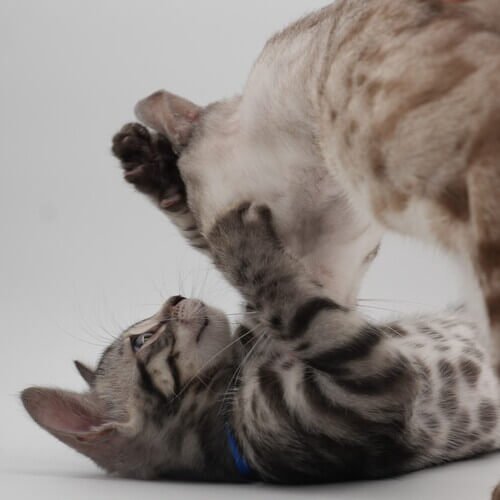
Yes, this means they are less likely to cause a reaction to those allergic to cats. A tiny, lightweight protein called Fel d 1 found in the cat’s saliva, urine, and dander is the culprit that causes the allergic reactions.
Maybe, but that is not proven. What we do know is that Bengals have a single-layer pelt instead of the usual double layer found in most domestic house cats. With this comes less grooming and zero to minimal shedding; therefore, the Fel d 1 Protein has fewer hairs to attach to and enter the air.

No, hypoallergenic does NOT mean allergy-free; it means producing fewer allergens than others. Visiting a cattery or someone with Bengals is the best way to know if you will have an allergic reaction. There is nothing better than actually interacting with the live animal and, better yet, the parents of the kitten you hope to adopt. *Not every Bengal is the same when it comes to allergies which is why it is important to get tested with the parents or Cattery you will be adopting your Bengal from. Air Purifiers that use HEPA filters are a great help against cat allergies. They reduce airborne pet allergens by forcing air through a special filter that traps pet dander, pollen, dust mites, and other allergens.